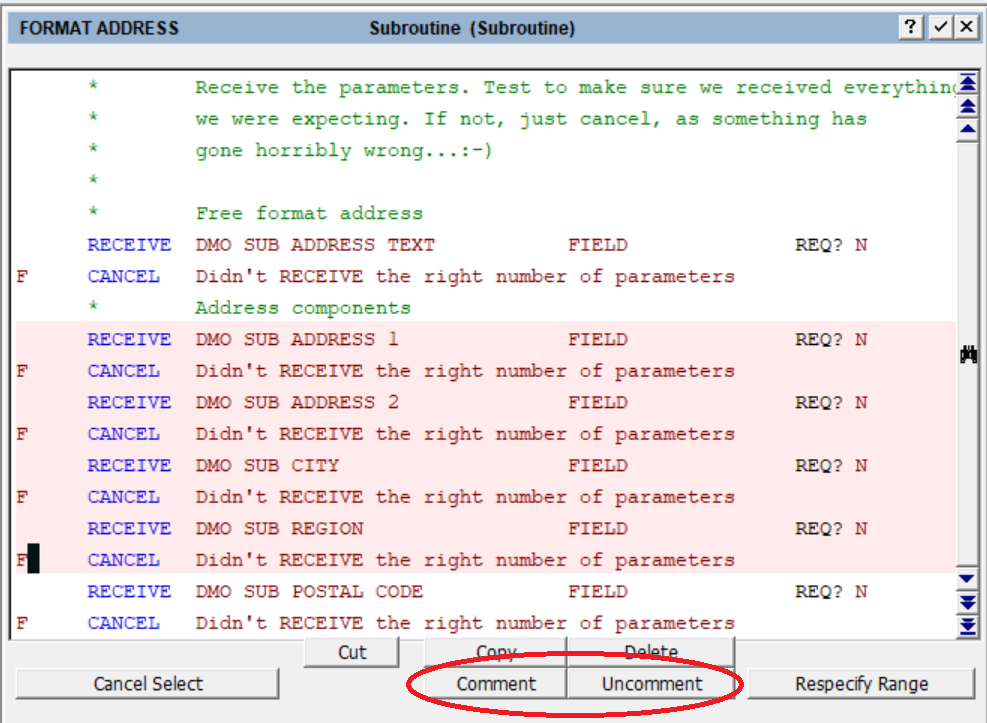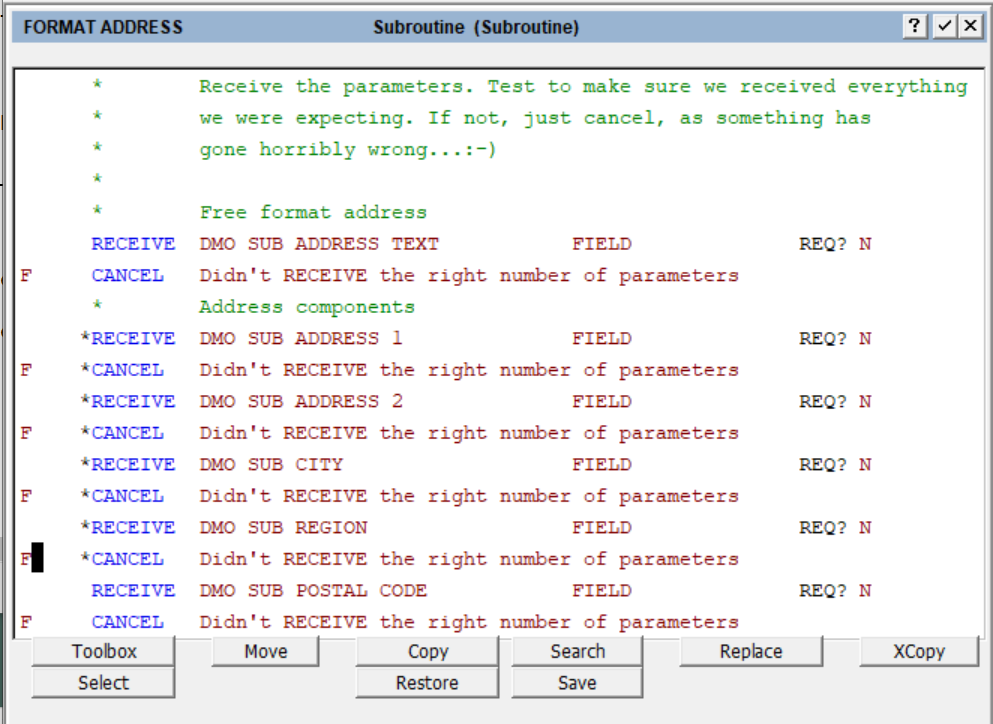Chapter 4-4: The ILF Editor |
Using Comments There are two special keywords that you can use to enter comments in a routine: either a single or double asterisk (* or **). Refer to ILF keywords * (Comment) or ** (Comment) for details on how to use them. In addition, during the course of debugging a routine, you may want to temporarily disable one or more valid statement keywords to see how a routine would execute without the statement(s) included. You can use the editor to accomplish this by entering a 'C' or an '*' (for comment) in the first character position of each statement line. This area is normally reserved for a true/false execution condition but a 'C' or an '*' overrides this normal use. When you execute the routine, the lines are bypassed as if they were comments. After appropriate testing, use the editor to reinstate the original true/false execution condition value, if desired, or delete the statements if you want to remove them permanently. You have the ability to comment a block (or single line) of code without disturbing the T/F flags. To comment a block of code, select it in the usual way (Option 7). The 'Comment', 'Uncomment' options will appear at the bottom of the screen along with Copy, Delete, etc. |
Application Design Manual "Powered by Appx Software"1667 ©2006-2023 By APPX Software, Inc. All Rights Reserved |

